An occupational therapist is a healthcare professional who evaluates and treats individuals of all ages who have difficulties in daily activities due to disease, injury, or disability. They have the responsibility of helping patients develop skills and strategies to improve their quality of life through the performance of practical job tasks. An occupational therapist resume should capture your qualifications and experience in the field so that employers will be eager to interview you for a position. When writing your resume, you should bear in mind that it will be not only an opportunity for you to sell yourself but also an opportunity for you to see what you’re made of. In other words, this is your chance to show potential employers how qualified and versatile you are. Readers want to know what makes you stand out from other applicants. You can include relevant examples from previous experiences showcasing your strengths and any academic achievements or distinctions pertinent to the job.
Occupational Therapist Resume Example
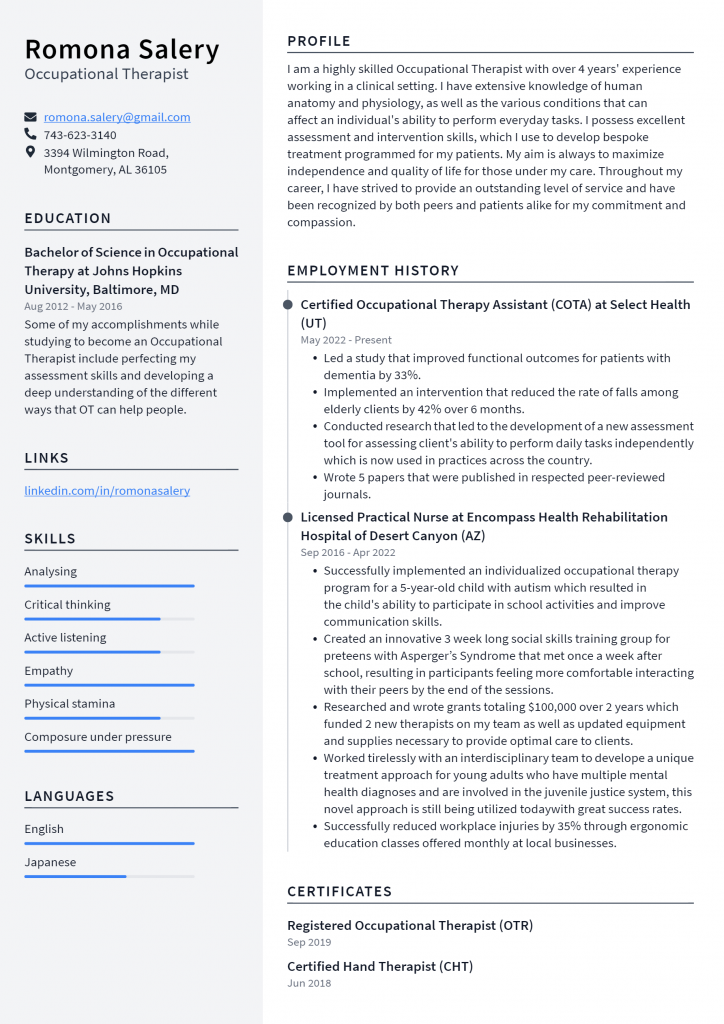
Download This Occupational Therapist Resume as PDF
School Occupational Therapist Resume Example
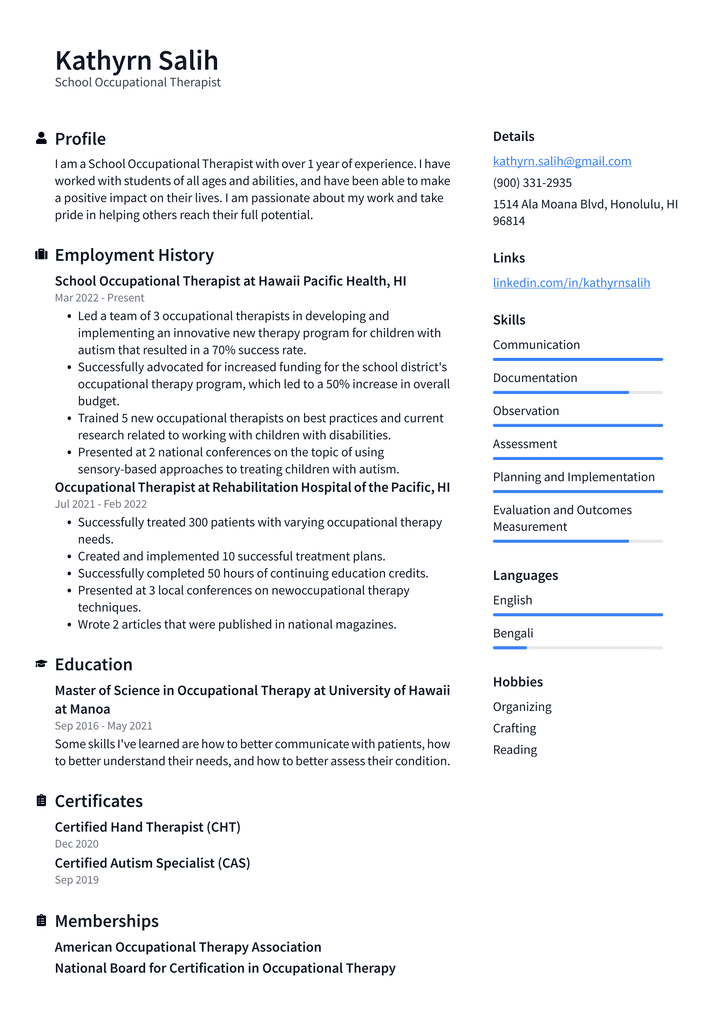
Download This School Occupational Therapist Resume as PDF
Physical Therapist Resume Example
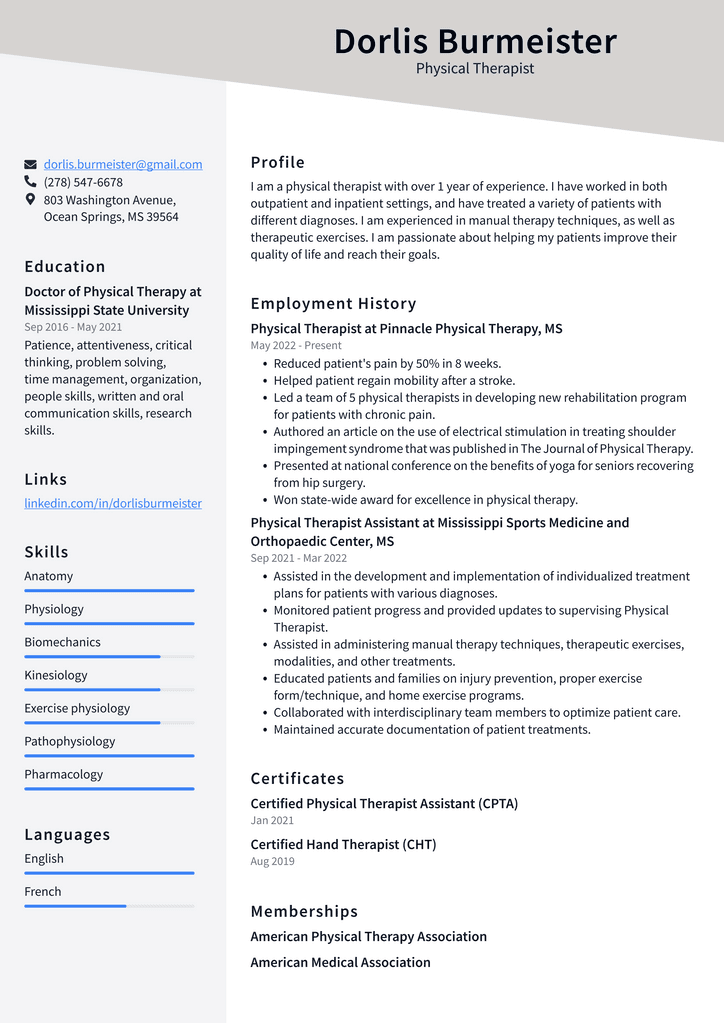
Download This Physical Therapist Resume as PDF
Pediatric Occupational Therapist Resume Example
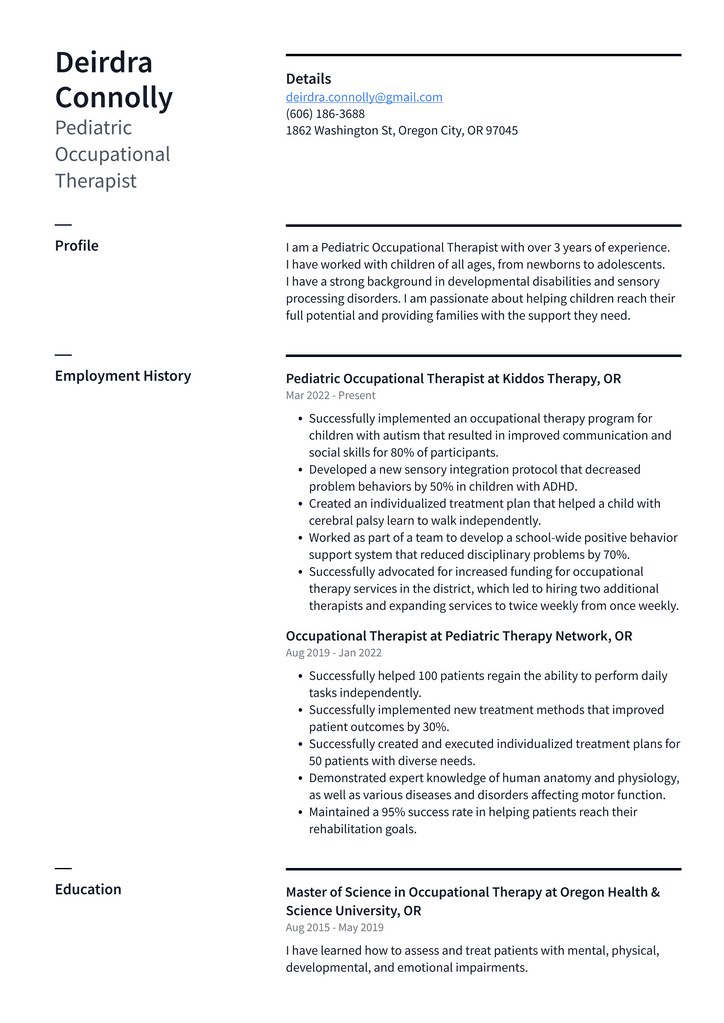
Download This Pediatric Occupational Therapist Resume as PDF
Occupational Therapist Assistant Resume Example
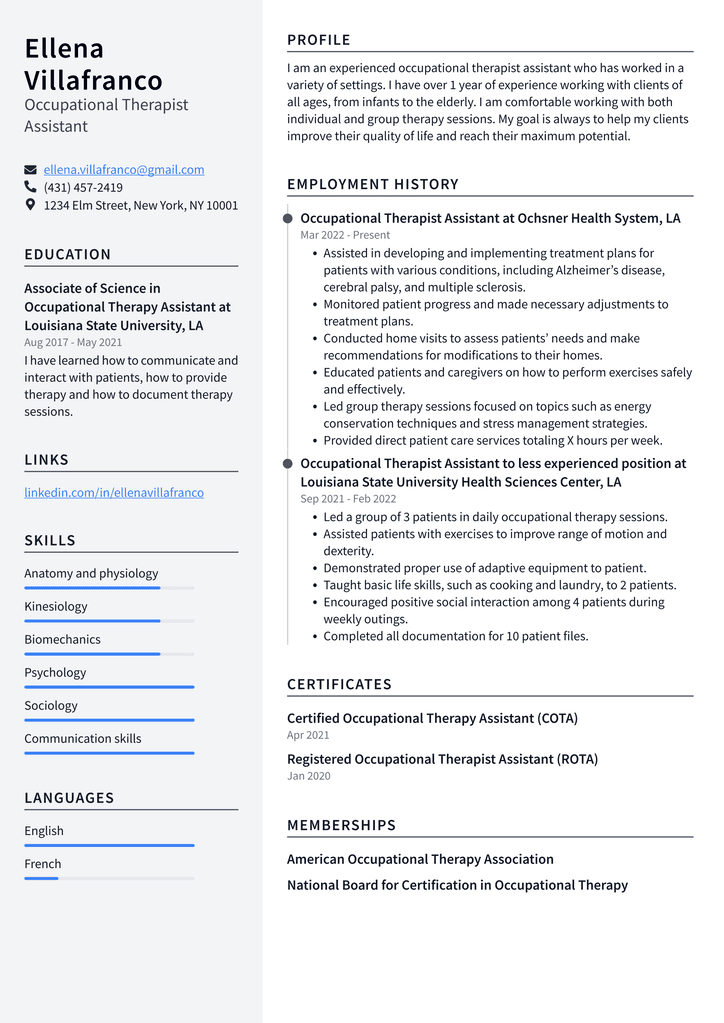
Download This Occupational Therapist Assistant Resume as PDF
Speech-Language Pathologist Resume Example
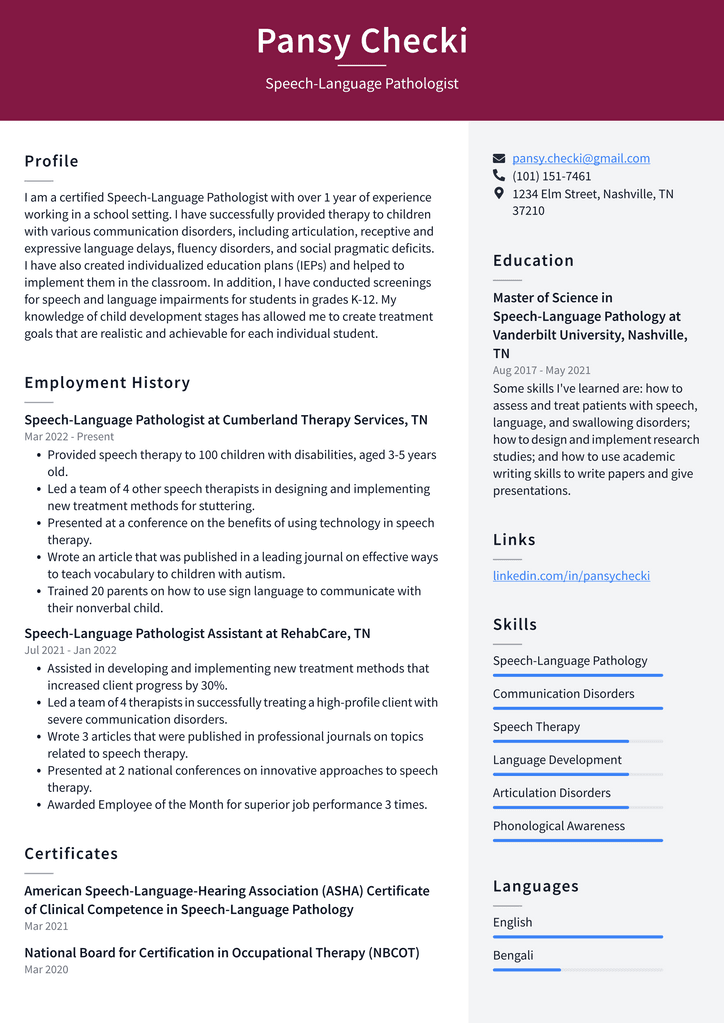
Download This Speech-Language Pathologist Resume as PDF
Hand Occupational Therapist Resume Example
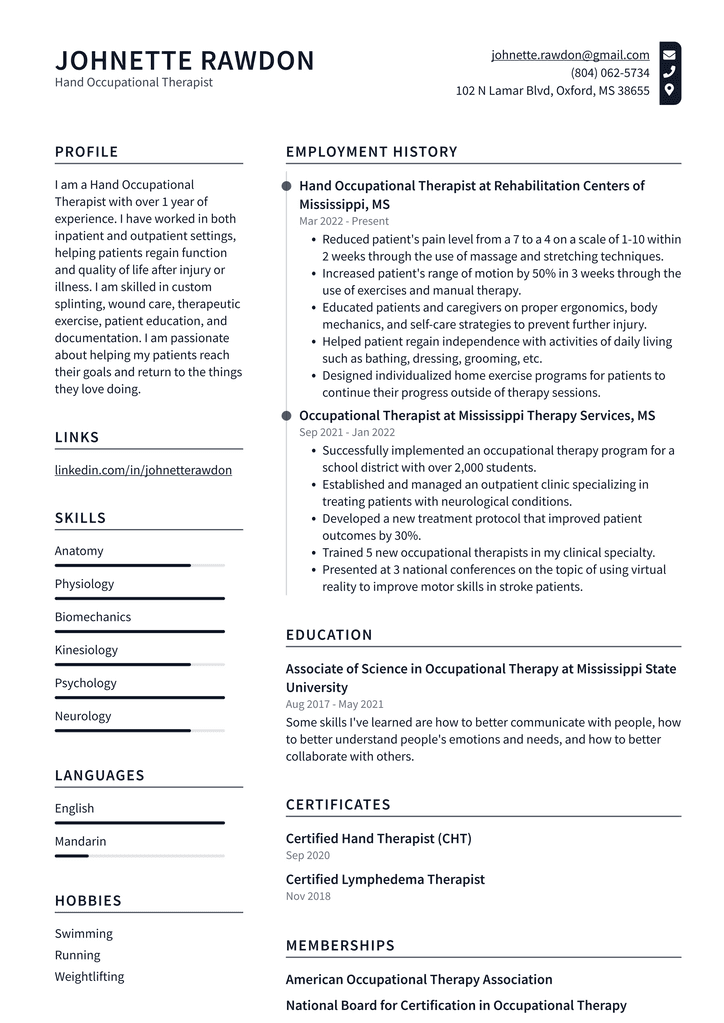
Download This Hand Occupational Therapist Resume as PDF
Use the Right Formatting
If you want your resume to stand out, you’ll need to use the proper formatting. Your resume should have a consistent and balanced layout, with clear and concise language. Your resume should have: – A catchy name that captures the employer’s attention – A short overview of your relevant experience – Details of your qualifications, skills, and education – A quick and engaging summary that summarizes your skills and expertise – A profile of your personality – Contact information Your resume should be printed on high-quality paper. You can opt for the standard white or cream form, but don’t forget to include your name and contact information at the top of the first page. You can also consider using a different color paper to accentuate critical sections of your resume.
Have a Consistent Format Across All Pages
Your resume should have a consistent format throughout all the pages. Employers want to know what to expect from your resume, and formatting will help them make sense of your experience in the most efficient way possible. If you’re applying for a position with specific formatting requirements, i.e., chronological or functional, have your resume professionally formatted to avoid errors.
Include Keywords That Are Relevant to the Job
If you’re struggling to find the right words to capture your skills and experience, look for the most commonly used keywords in the job posting. If you’re unsure what keywords to use, ask a friend or family member to help you. It’s better to be over-inclusive than under-inclusive when it comes to keywords, as this will help you stand out against other applicants and give you a better chance of being shortlisted for an interview. Using the right keywords can increase your chances of being shortlisted by up to 50%.
Showcase Your Skills and Qualifications
Your resume should be a snapshot of your skills, qualifications, and accomplishments. It’s a good idea to include a summary of your qualifications and experience at the top of your resume. Your summary should be short. Aim for no longer than two or three sentences. A summary is the first thing employers see when reviewing your resume, so it’s an excellent opportunity to show off your most impressive qualifications and skills. In addition, your summary should highlight your strengths and accomplishments, e.g., languages, skills, degrees, awards, etc., that are most relevant to the job.
Conclusion
Your resume is your chance to make a great first impression on potential employers. It is your chance to showcase your skills and qualifications and show employers why you are the best person for the job. That said, your resume is more than just a list of bullet points; it’s an opportunity for you to tell a story. A story contains transferable skills, practical experience, and applicable education. Your resume should be written in the first person, include your contact information, and have consistent formatting across all pages. It should also include keywords relevant to the job and showcase your skills and qualifications.